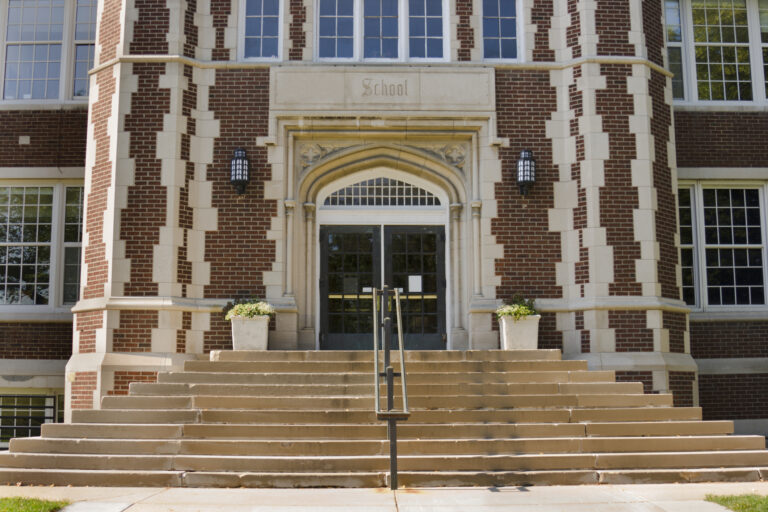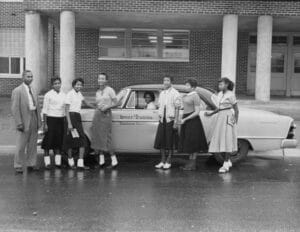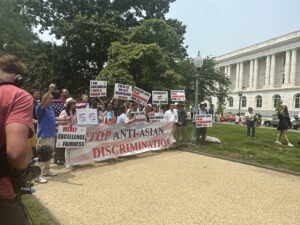The Dispatch: How competitive high schools get away with race-based admissions

“Eliminating racial discrimination means eliminating all of it,” Chief Justice John Roberts wrote for a majority of the Supreme Court in last summer’s Students for Fair Admissions opinions, which held that affirmative action policies at Harvard and the University of North Carolina violated the Constitution. While colleges can no longer use race as a factor in admission, the Supreme Court’s denial of certioari in a case involving a selective public school has unfairly suggested to some that the rules are different for selective high schools.
The court opted to avoid the question in February when it declined to hear Coalition for TJ v. Fairfax County School Board. Justice Samuel Alito dissented from the denial of certiorari, writing that a lower-court decision upholding Fairfax County School Board’s admissions policy means that “intentional race discrimination is constitutional so long as it is not too severe.”
How can these two contradictory statements be reconciled? Is the court as poised to strike down all race discrimination in admissions as it appeared in Students for Fair Admissions? Why does it seem that the court feels that race-based admission is unconstitutional for college-aged students but tolerable for those in grades K-12? And what other cases might find their way to the Supreme Court?
What was at stake in Coalition for TJ v. Fairfax County School Board?
Thomas Jefferson High School for Science and Technology (TJ) is a magnet school in Alexandria, Virginia, that provides advanced education in math, science, and related fields to gifted students. In fall 2020, the Fairfax County School Board dropped its famously demanding admissions exam and replaced it with a system that awarded most seats to students in the top 1.5 percent of each Fairfax County middle school, based on grade-point average. Because Asian American students disproportionately attend a few particular Fairfax County middle schools, the changes caused TJ’s admitted class to drop from being 73 percent Asian American to 54 percent.
A parent group called Coalition for TJ sued, represented by my public interest law firm, Pacific Legal Foundation (PLF), claiming that the changes constituted unconstitutional race discrimination. The coalition won in district court, where Judge Claude Hilton observed, “Everybody knows that the policy is not race-neutral, and that it’s designed to affect the racial composition of the school. You can say all sorts of beautiful things while you’re doing others.”
The school board appealed to the 4th Circuit Court of Appeals and won in a 2-1 decision. Judge Alison Rushing dissented, finding that “the evidence shows an undisputed racial motivation and an undeniable racial result” and criticizing the majority opinion for “failing to look past the Policy’s race neutral varnish.”
In private text messages produced in discovery, school board members candidly acknowledged that the changes targeted Asian Americans: “there has been an anti asian feel underlying some of this, hate to say it lol,” one message said, and another stated flatly that “Asian Americans were ‘discriminated against in this process.’
To avoid the appearance of racial preferences, the board used middle school attendance as a proxy for race, which nonetheless got them the racial results they wanted. Legally, the use of a racial proxy rather than race itself should not matter: “The Supreme Court has repeatedly ruled against racial discrimination by proxy,” Vanderbilt law professor Brian Fitzpatrick noted in the Wall Street Journal. “If the purpose of an apparently race-neutral decision is to cause racial effects, and the decision in fact causes racial effects, then the decision is as illegal as using race itself would be.”
After losing at the 4th Circuit, Coalition for TJ petitioned the Supreme Court, emphasizing the national importance of the case in light of Students for Fair Admissions opinions. Those rulings meant universities could no longer use racial reasons, even when narrowly tailored, to pursue a compelling interest in diversity. But that created a follow-up question: What about more indirect methods of discrimination, like the proxy discrimination used by Fairfax County? Could universities forbidden from using race directly still get away with employing proxies for race?
Chief Justice Roberts rejected such proxy discrimination in Students for Fair Admissions: “Universities may not simply establish through application essays or other means the regime we hold unlawful today,” he wrote. He added: “[W]hat cannot be done directly cannot be done indirectly.”
Are there other proxy discrimination cases the Supreme Court could decide in the near future?
If TJ is a straightforward example of a school district trying to do indirectly what it could not do directly, why not grant certiorari? The Supreme Court only grants review of a small number of the petitions filed; the process the justices choose is necessarily opaque to the public. Still, a denial of certiorari does not overrule Students for Fair Admissions’ ringing rejection of proxy discrimination. (Indeed, a denial does not even mean the court agrees with the merits of the lower court ruling.)
Meanwhile, other proxy discrimination cases are being litigated in the lower courts and may eventually reach the Supreme Court. Because the court had never held that affirmative action preferences are constitutional in the K-12 context, many cases, like Coalition for TJ, involve selective middle or high schools rather than universities.
Boston Parent Coalition for Academic Excellence v. School Committee is another proxy discrimination case. There, exam scores traditionally determined admission to three prominent Boston high schools, including the famous Boston Latin School, founded in 1635 as America’s first public school. However, in 2019, the school board adopted a plan that allocated 20 percent of magnet seats based on grade point average and the rest based on zip codes.
Boston’s school board did not try to disguise its racial motivations. One working group member said that the admissions changes were meant to address “historic racial inequities,” and the School Committee’s chair was caught on a live microphone mocking Chinese American surnames. Because Asian American and white students in Boston tend to live in certain zip codes, the new admissions procedure meant that students from these groups went from receiving 61 percent of the seats available in magnet programs to just over half of them. Boston Parent Coalition lost at the 1st Circuit and will petition the Supreme Court for certiorari this spring.
At least two other similar K-12 cases are in earlier stages of litigation. New York City is home to some of the country’s best-known competitive admission high schools, including Stuyvesant High School, the alma mater of four Nobel Prize winners. Until recently, Stuyvesant and other New York City magnets made most admissions decisions based on Specialized Admissions High School Test scores. However, a small number of students from low-income backgrounds could qualify through the Discovery program, which set aside some seats for students from low-income families scoring just below the cutoff.
In 2020, however, then-Mayor Bill DeBlasio limited the Discovery program to students from middle schools with a 60 percent or higher poverty rate. Because Asian American students cluster in New York middle schools with lower poverty rates, this change decreased the number of seats available to them in new magnet schools, even though many of these students themselves come from low-income families. As elsewhere, the adverse effect on Asian American students was not coincidental; New York City Schools Chancellor Richard Carranza observed in a television interview, “I just don’t buy the narrative that any one group owns admissions to these schools.” This case is pending in the 2nd Circuit.
Maryland’s Montgomery County Public Schools similarly redesigned its admissions processes to change magnet middle school racial demographics. First, Montgomery County adopted “socioeconomic norming,” where students’ test scores are compared to those of kids from a similar socioeconomic background rather than everyone taking the test. In this case, scores were normed according to the socioeconomic status of elementary schools instead of district-wide. Second, it adopted a policy that put students with a group of “academic peers” in their home middle schools at a disadvantage when applying for magnet programs. In theory, this could be a race neutral policy: if you have enough smart peers in your home school, you don’t need a magnet program. In practice, it disadvantages kids with too many smart peers in their home schools. Because Asian American students are concentrated in particular Montgomery County middle schools, these combined policies were intended to, and did, lower Asian American representation in magnet school programs. That case is on appeal to the 4th Circuit.
In the wake of Students for Fair Admissions, many colleges and universities may turn to proxy discrimination to achieve the same racial demographics previously attained through now-forbidden discrimination. At a panel held just days after the decisions were handed down, the dean of UC Berkeley School of Law and the general counsel for the University of Michigan openly advocated that universities follow the 4th Circuit’s Coalition for TJ opinion as a roadmap for proxy discrimination. Whatever the reasons for not taking up the case, the Supreme Court will likely eventually have to address proxy discrimination’s legality in a later case.
Should the court wait for a case where it can uphold the facially neutral practice?
Some prominent legal commentators, including the hosts of the Advisory Opinions podcast, have suggested that the Supreme Court might be waiting for a case where it can uphold the challenged practice but indicate that other similar discriminatory practices are illegal.
However, there is no admissions process that will be legal in every instance because the intentions behind the policy matter. Take Top Ten Percent plans: A district that builds a brand new magnet school, admits the top 10 percent from each feeder school and never considers race during deliberations has likely acted lawfully. Now imagine another school district that adopts a Top Ten Percent plan after months of discussions making clear that the plan was chosen for racial reasons. The second school district is on much weaker legal ground under the Supreme Court cases prohibiting proxy discrimination. The analysis is the same for zip codes and other proxies for race. If the Supreme Court is waiting to find a challenged practice that will always be upheld, it will likely have to wait a long time.
What are non-litigation solutions to proxy discrimination?
Although litigation is one important tool for stopping proxy discrimination, it is not the only one. State or federal legislation along the lines of PLF’s model legislation can clarify when proxy discrimination is illegal or offer additional remedies to those harmed by it.
The Department of Education can also investigate whether schools that receive federal funds are using proxy discrimination in violation of federal civil rights law. Unfortunately, they largely disregard such discrimination.
Although the cert denial in Coalition for TJ is a regrettable loss for supporters of equal protection, the fight continues and is far from over. Individuals should be treated as individuals and not on the basis of their membership in racial groups. When schools use race to favor one group of people, they deny opportunities to another group. These principles apply both to policies that directly discriminate based on race and those that are race-neutral on their face but adopted for discriminatory reasons. For both high schools and colleges and universities, the Constitution’s command is clear: eliminating racial discrimination means eliminating all of it, direct and indirect alike.
This op-ed was originally published in The Dispatch on May 1, 2024.






